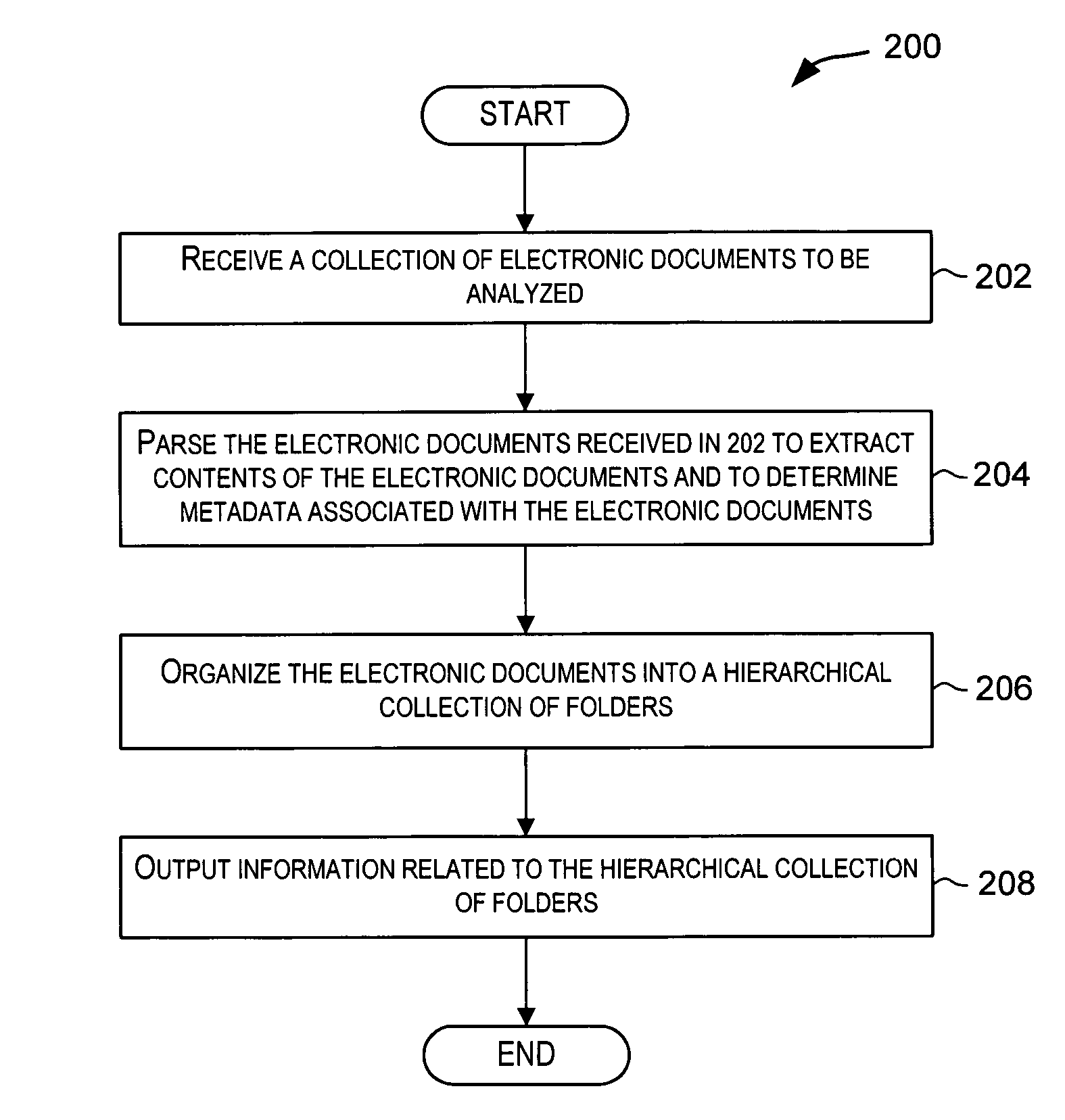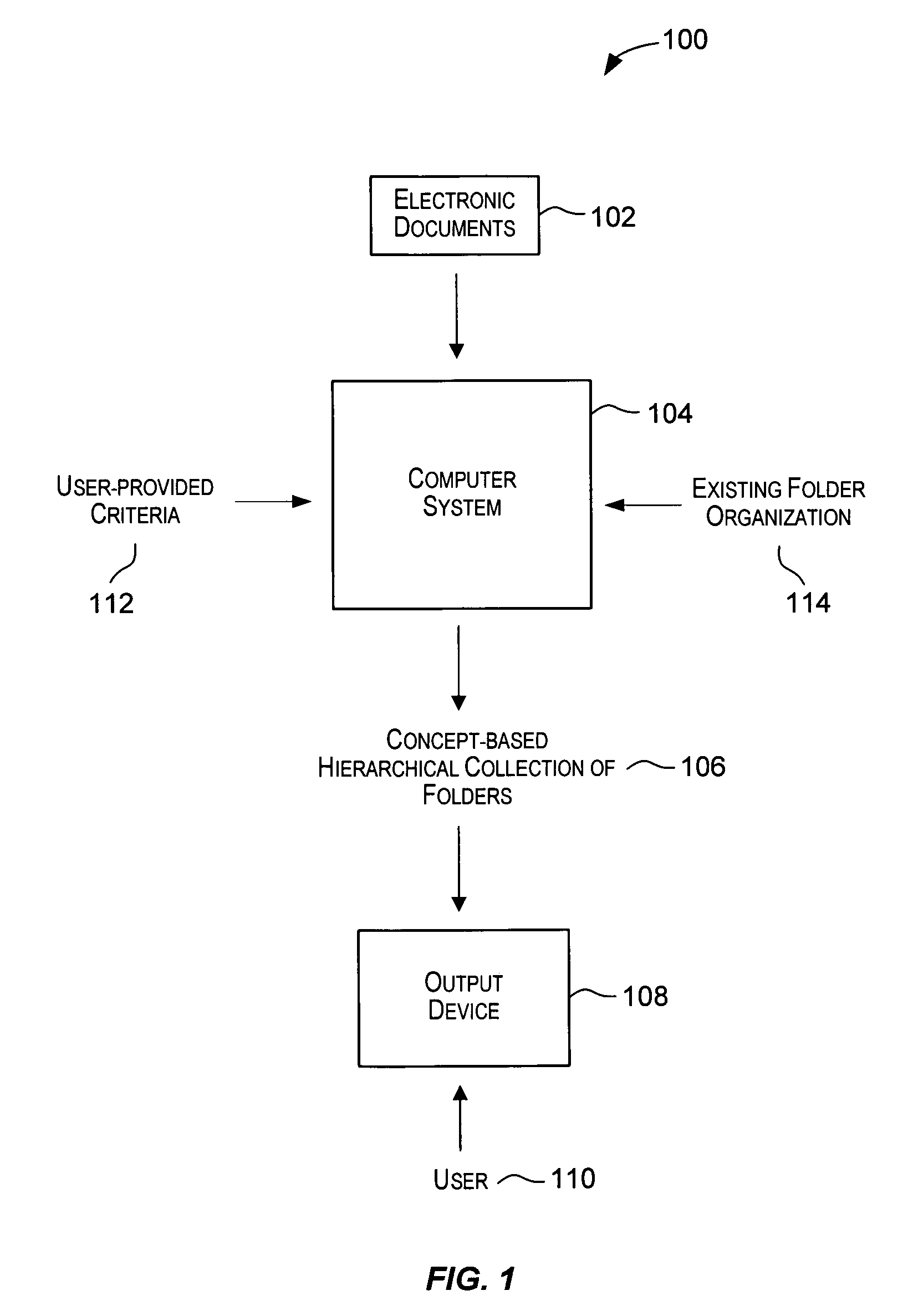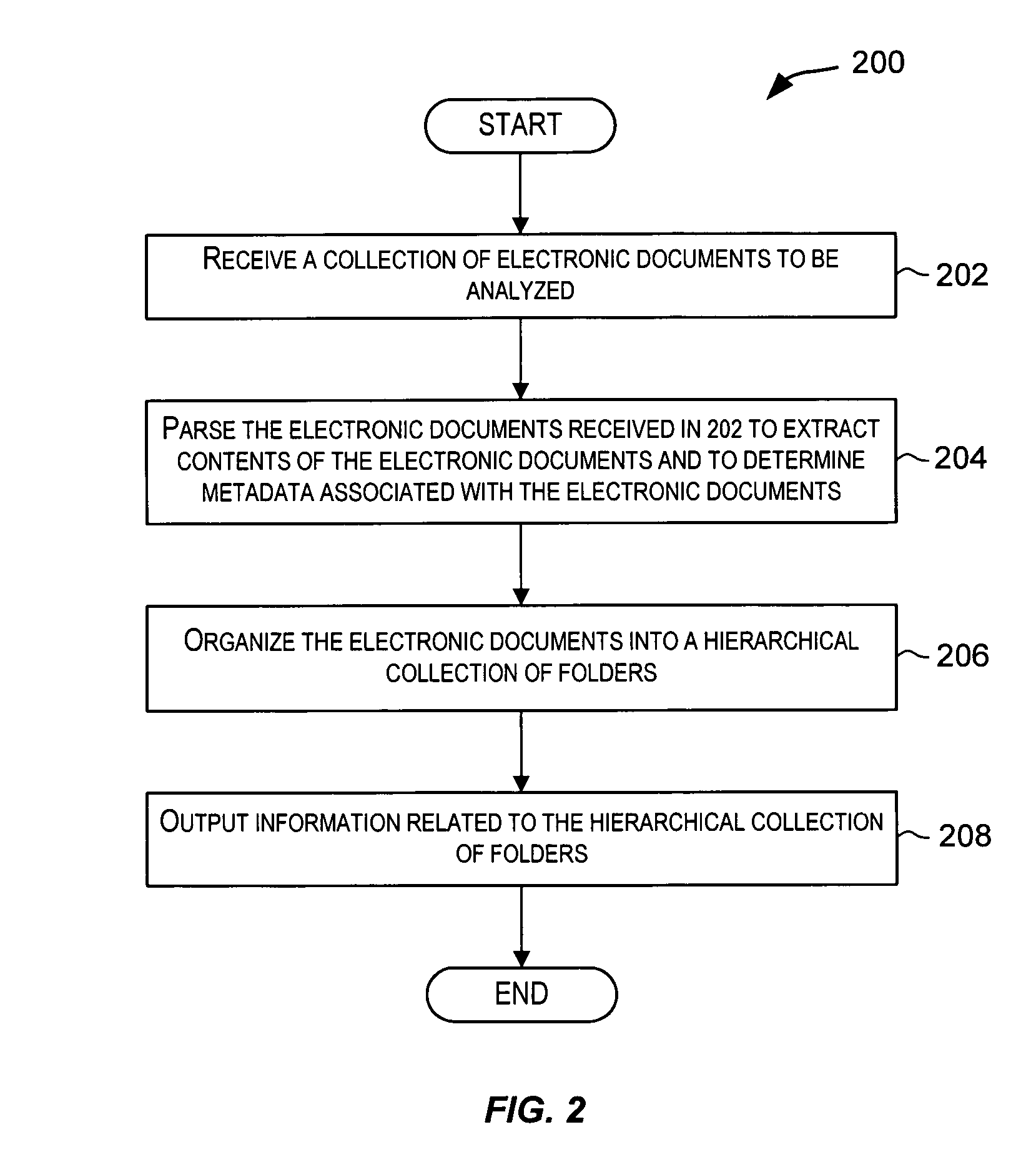Techniques for organizing data to support efficient review and analysis
a technology of data and organizing techniques, applied in the field of organizing data, can solve the problems of overwhelming traditional ways of conducting legal discovery by the sheer volume of discoverable information, complicating analysis tasks, and affecting the review of documents, so as to facilitate the review of documents
- Summary
- Abstract
- Description
- Claims
- Application Information
AI Technical Summary
Benefits of technology
Problems solved by technology
Method used
Image
Examples
Embodiment Construction
[0030]In the following description, for the purposes of explanation, specific details are set forth in order to provide a thorough understanding of the invention. However, it will be apparent that the invention may be practiced without these specific details. For example, an embodiment of the present invention has been described below for organizing electronic documents related to legal data discovery. However, the scope of the present invention is not limited to the legal domain and may be applicable to any domain that involves review and analysis of a large collection of electronic documents.
[0031]FIG. 1 is a simplified block diagram of a system 100 that may incorporate an embodiment of the present invention. FIG. 1 is merely illustrative of an embodiment incorporating the present invention and does not limit the scope of the invention as recited in the claims. One of ordinary skill in the art would recognize other variations, modifications, and alternatives.
[0032]As depicted in F...
PUM
 Login to View More
Login to View More Abstract
Description
Claims
Application Information
 Login to View More
Login to View More - R&D
- Intellectual Property
- Life Sciences
- Materials
- Tech Scout
- Unparalleled Data Quality
- Higher Quality Content
- 60% Fewer Hallucinations
Browse by: Latest US Patents, China's latest patents, Technical Efficacy Thesaurus, Application Domain, Technology Topic, Popular Technical Reports.
© 2025 PatSnap. All rights reserved.Legal|Privacy policy|Modern Slavery Act Transparency Statement|Sitemap|About US| Contact US: help@patsnap.com



